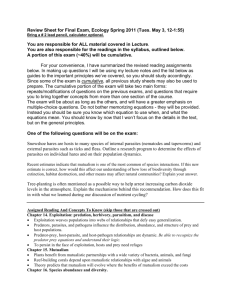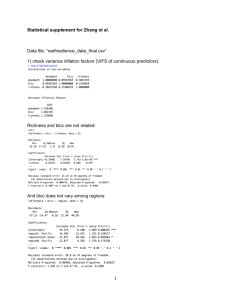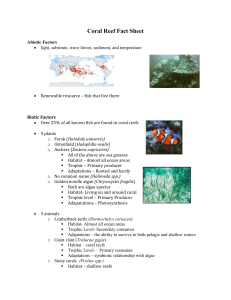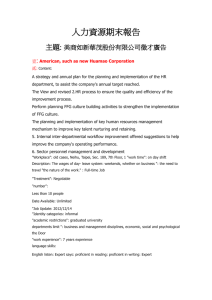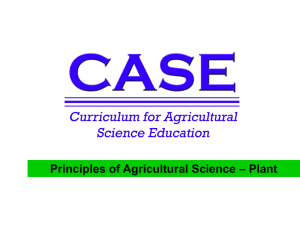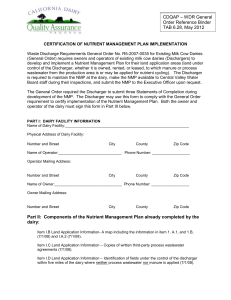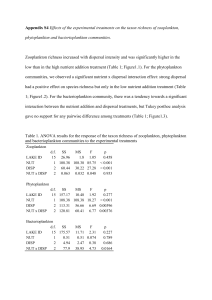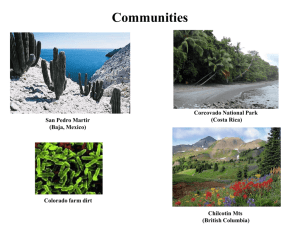1645 Allgeier J - 12th International Coral Reef Symposium
advertisement
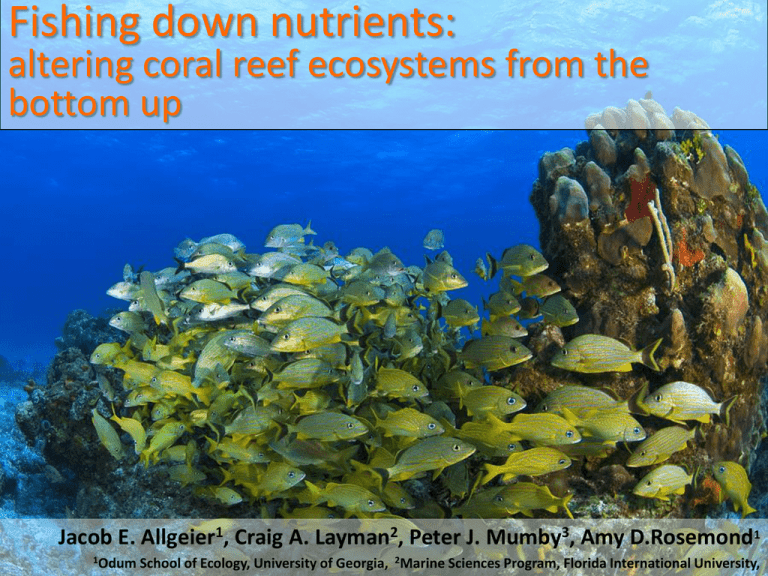
Fishing down nutrients: altering coral reef ecosystems from the bottom up Jacob E. Allgeier1, Craig A. Layman2, Peter J. Mumby3, Amy D.Rosemond1 1Odum School of Ecology, University of Georgia, 2Marine Sciences Program, Florida International University, Implications for ecosystem function • Meyer et al. 1983 • Allgeier et al. in revision • Burkepile et al. in review Nutrient pathways to coral reefs Nutrient pathways to coral reefs Nutrient pathways to coral reefs Overfishing Overfishing - Nutrient Capacity Objectives • Identify which community characteristics influence nutrient supply and retention by fish in coastal marine ecosystems • Identify how overfishing may be altering these processes Empirical Excretion Rate Estimates • • • • 29 families 46 genera 76 species >650 individuals • Surveys – – – – Mumby et al. 2006 Harborne et al. 2008 6 islands 6 habitats 172 sites same transect methods GAMM Model Parameters DIVERSITY richness N P sp. diversity SIZE STRUCTURE skewness max length TROPHIC STRUCTURE mean TP FFG diversity Nutrient supply DIVERSITY SIZE STRUCTURE TROPHIC STRUCTURE richness sp. diversity skewness max length mean TP N P FFG diversity Nutrient storage DIVERSITY SIZE STRUCTURE TROPHIC STRUCTURE richness sp. diversity skewness max length mean TP FFG diversity N P P supply from fishes g/m2/day N supply from fishes g/m2/day Overfishing Conclusions • Species richness and the size structure of the community is critical • Species diversity is also important, but in a counter intuitive way (can have high richness and low diversity) • This research stresses the importance of integrating the bottom-up roll of consumers into models of coastal ecosystem function Acknowledgments • Feedback from: Meredith Meyers, Clint Oakley, Dustin Kemp • Field and logistical support: – Darlene Haines, Kaye Rennert, Rava Apollo, Jim Richards, Friends of the Environment, Lauren Yeager • Funding: EPA STAR Fellowship, NSF DDIG
